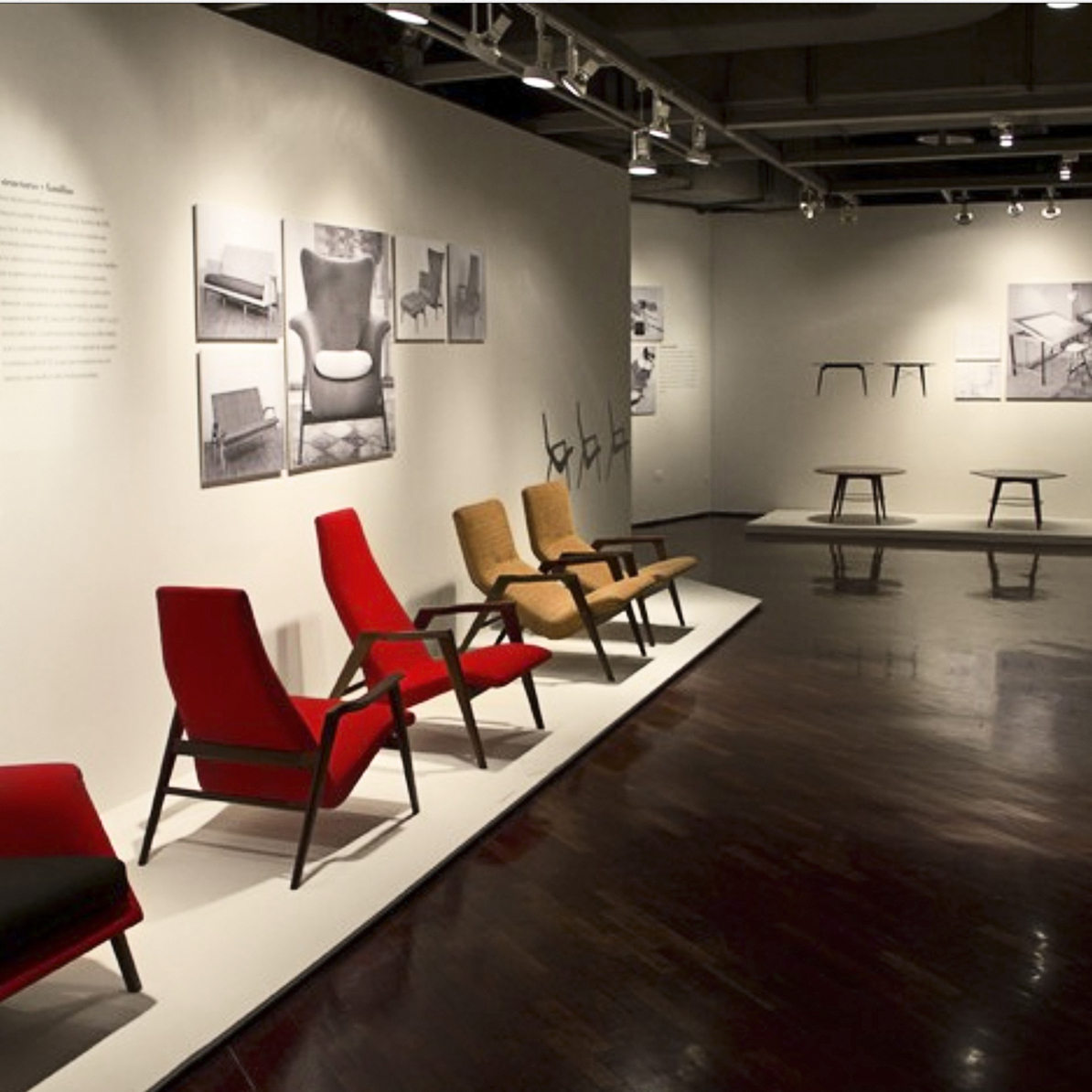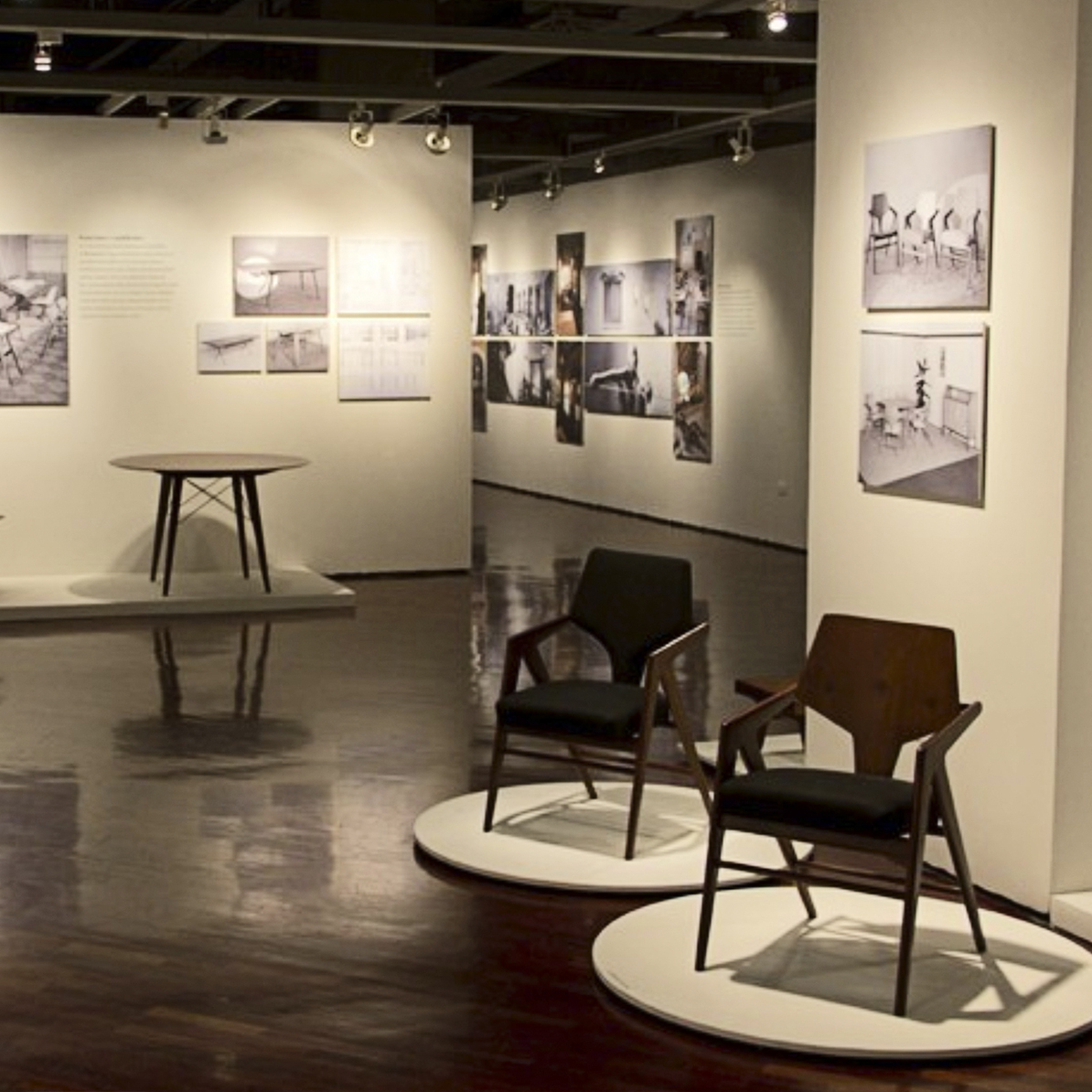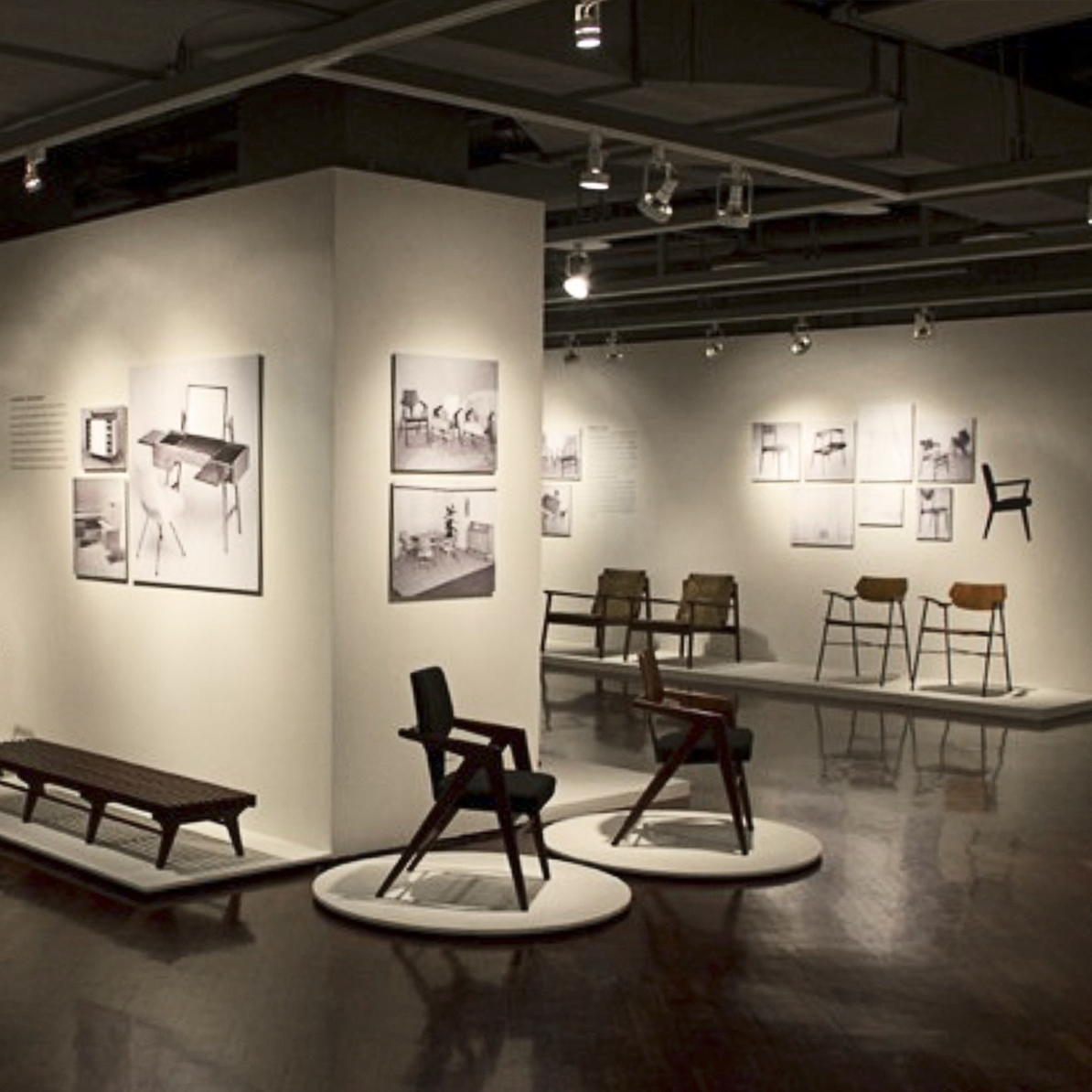Side Gallery
Side Gallery
WishlistFollow
Follow
CORNELIS ZITMAN. LA DÉCADA
DE DISEÑO / 1947-1957
CARACAS
SALA TRASNOCHO CULTURAL
JUN 16 2011 - AUG 28 2011
In Venezuela during the 1950s there was an active group of furniture designers whose works are of increasing significance. Among these creators was Cornelis j Zitman, probably the most prolific yet also the most unknown.
Before the exhibition “Seated in a Century” (La Estancia Art Center, 1997), Alberto Sato contrasted the chairs of Zitman, Emile Vestuti, Miguel Arroyo and Rudolf Stejskal, with those of Breuer, Mies, Bertoia, Eames, to inquire and weigh that inclination into the local taste for the modern and the avant-garde. What Zitman had achieved with the production of his furniture was fame. For architects and designers who had been colleagues and students both at the School of Architecture of the Central University of Venezuela, around 1953-54, and at the Neuman-INCE Institute of Design, a decade later, Zitman's name was linked to the foundations of modern design production, being good quality and economical furniture. He had a talent for understanding and teaching design. He was and still is an inspiration.
However, the specific analysis of Zitman’s design had not gone beyond isolated examples. The quotes and references were almost always the same pair of models: the structure of the chair in solid dowel and plywood, also included in the Mega Exhibition (Museum of Fine Arts, 2003), and the drawing table favored by architects, both reproduced in Everyday objects: Design and manufacturing in Venezuela (Carlos Cruz-Diez Museum of Printing and Design, 2006).
For this reason, it was considered an encouraging omen to have found the unique catalog No. 1 of Tecoteca, printed by Cromotip in 1953, designed entirely by Zitman himself, which offers a repertoire of structures that adapt, with slight modifications, to a variety of functions and effects to create the family of forms that characterized their invention. (As a compliment to that great moment of design, this publication evokes the cover, and reproduces some covers and pages of the copy found).
Armed with the images that resurfaced with the catalog, and that have been a clue and a lure in research, and accompanied by the prodigious memory that Zitman preserves, in addition to the photographic archive and some of the original plans of Tecoteca saved by chance, the team of exhibition organizers were able to complete the selection of parts included in this sample which is hardly an indication of all that the designer produced, as can be inferred when analyzing the images of the prototypes destined for the company's second catalog that were not made.
In his historiographical text for this publication, which is an indispensable reference on this subject, Jorge F. Rivas Pérez describes and focuses of Zitman's activity as The decade of design, 1947-1957: a crucial chapter in the production of conceived and manufactured furniture in Venezuela, which begins in Coro, flourishes in Caracas and reaches a kind of closure on the island of Grenada when the artist-Zitman confronts Zitman, the designer-businessman, to claim the time of his future.
A mixture of admiration and disbelief is the feeling that best accompanies remembering the action of Tecoteca, the furniture manufacturer that Zitman created in partnership with the engineer Antonio Carbonell, it was an era of splendor and misery, and whose portfolio of forms and functions furnished the Monserrat residential building in Altamira, the work of Emile Vestuti when he worked at the firm of architects Guinand and Benacerraf, and the renowned Club Táchira de Fruto Vivas, through a concerted program, focused on the production of standardized furniture for oil camps for Shell company in Venezuela, which Zitman conceived with managerial logic and quality to the frustrating project with Carlos Rául Villanueva to furnish the homes of the residential complex called December 2.
Four years after its creation, Tecoteca went from one crisis to another. In 1956, his workshop in Boleíta caught fire and although the project for its reconstruction and relaunch in Cagua had been programmed and carefully studied with the acquisition of machinery and the establishment of procedures of the latest technological ability, the business bankruptcy occurred admits a tidal wave of the economic and political changes in 1958 which proved unpredictable and unrecoverable. The name Tecoteca was liquidated along with its assets and acquired as a brand for the production of kitchen furniture. Today it survives as the name of a building located on Avenida Francisco de Miranda, south of the Atlantic building, in Los Palos Grandes, near where in its heyday Tecoteca had its most impressive store.



"This movement of which Zitman was intertwined brought together architects tracing modern life, engineers calculating risks, designers and manufacturers trying the feasible within the possible"
Although late, this exhibition set to praise the great moment the brand. It required examples that show the facets of a design imagined by its main conceptualizer and technical director to be produced by an innovative company investing in style at an early stage of the modern boom in the city. The program conceived by Zitman for the new Tecoteca is for reflection, typical of a more ambitious publication than the current one. These are documents that conceptualize, end functions, categorize families and uses, and express wise warnings about the indispensable stock that a factory must systematize to get the materials, domestic or imported, required in production. In exchange with his colleagues in the company, Zitman focuses on these roles all his experience and especially his consistent vision in terms of design, manufacturing and materials. He even suggests a short list of names of active Venezuelan designers he proposes to be consulted and / or hired so that in this new business encompassed good design. The list includes “Emile Vestuti, Henrique Hernández, Vittorio Garatti, Domingo Álvarez, Fruto Vivas, Rafael Puig, Graziano Gasparini, Miguel Arroyo, Alejandro Pietri and Americo Faillace, in addition to Mrs. Cicero.
Zitman left Venezuela to resume his artistic vocation. After four years of living in the Netherlands, he responded to an invitation from the architect Oscar Carpio to once again work as a professor at the Faculty of Architecture of the UCV, where he remained until the turbulent times of renovation. It is in that lapse when he looks for suitable housing for an expanding family and thus discovers and reconstructs the ruins of the old trapiche of the Hacienda La Trinidad. So that the architectural aspect is not excluded from this insight into Zitman’s medias. The exhibition closed with a look at those spaces that Zitman materially remade with his hands, anticipating the implementation of the principles on recycling.
Until the last years of his life Zitman remained active in his spectacular residence, which was also a workshop and museum, and a declared cultural heritage site. There, admits his work and his memories, accompanied by his inseparable wife Vera Roos, also an artist of her own merits, he worked on the organization of his reasoned catalog without ceasing to do what he has always done: imagine and give opinions. Gifted with a memory that can be described as photographic, he recounted how he came into the world of furniture design and production and also why he left it. Not without emphasizing the engine of his search of that time, toned by a sensible spirit that he attributes to his "Dutchness", in which the factory was conceived as a machine to generate furniture accessible to the most needy social levels.
The amazing curation of what Cornelis J. Zitman produced in the years he designed and manufactured furniture, offered an insight to the manufacturing of modern furniture in Venezuela, of which is still very much being discovered and rests on the shelf of the things that hope to be better understood and settled in the country’s recent history. Looking at this splendid past, there is nothing but the greatest praise for the designer and his work which is now reconnecting with the public, the audience whom which it was originally designed for.